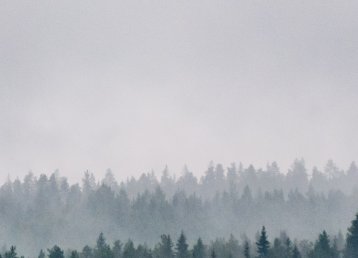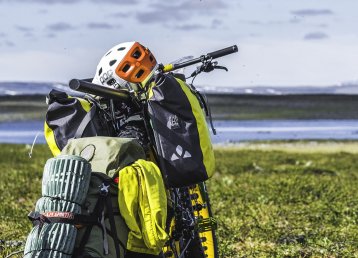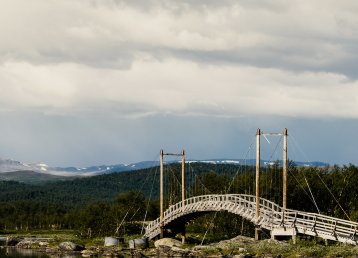Picking cloudberries with my parents might be my most boring childhood memory.
Hunched down on marshland guarded by fir trees, not a gust of wind in sight and sweat pouring under a scarf that offered, at best, inadequate protection against the mosquitoes. Wet socks sloshing around in wellies and hands madly waving in an effort to keep the bloodsuckers from my face. No, it’s not a fun memory.
Hunting for the Arctic’s gold
But today I’m doing the same things with my children. Taking them out into the forest, slathered in several layers of mosquito repellent with mosquito hats on their heads, to be torn off when it gets too hot. With sleepless nights due to itching body parts, as a result, we’re hunting for the Arctic’s very own gold.
It’s because I also remember the forest glade illuminated by a ray of sun, the silence and the picnic basket with sausage sandwiches and hot chocolate that mum would serve up on top of a tree stump. And how proud I was of the riches in my small, plaited-bark basket. Once we got back home, the flavour was that of ancient forest sweetness with vanilla ice-cream.
The freedom to roam
Every summer we pack a backpack with firewood, sausages, a coffee pot, extra mosquito repellent and a proper forest knife. A knife that can peel apples as well as carve grill sticks. Then we’re off into the forest, wearing wellies, the entire family – time for harvest.
In Sweden, everyone can to wander in the forest, pick berries, camp and make a fire. To be able to access nature is a right for us. A right defined in what we call the Right of Public Access or “Freedom to roam”.
But as a wise man once said: with great freedom comes great responsibility.
You can spend time in every forest, pick berries and take them home, all according to this right of access. But you mustn’t cause damage to the soil and vegetation, like tearing up shrubs, removing bark, or picking large amounts of moss. There are also protected plants to take into account, so don’t pick flowers you don’t recognise. Of course, you are not allowed to abuse another person’s private sphere, or land around houses, for example.
It’s fine to make a campfire where there’s no danger of the fire spreading, but never light a fire on a rock, as stone can crack. You may burn cones and twigs lying on the ground, but not chop trees down, so bring a few pieces of firewood. You can buy them at the nearest petrol station. Make sure the fire is out before you leave. If you come to a place where there is already a fireplace available, use it instead of creating a new. Fireplaces become wounds in the ground that take time to heal.
Things to keep in mind
You’re allowed to camp almost everywhere, but not near someone’s house, farm, or pasture with grazing animal – which seems logical. Camping with a couple, three tents for some days is included in the right of public access. If you’re a bigger group or stay for longer, better ask the landowner first.
In the national parks, there are other rules on fires and camping. Always find out which rules apply and during what periods for that specific national park. For example, it’s forbidden to bring dogs, and stringent rules apply to protect fragile vegetation.
In conclusion, we can say you’re free to head into the nearest forest and pick as many blueberries, lingonberries and cloudberries you can carry – as long as you use common sense. Don’t damage nature and don’t litter. Read signs or billboards, perhaps speak to the tourist information or the municipal office if you’re unsure what rules apply. If you’re new to the area: buy a map from the nearest tourist centre to orient yourself. It’s always a good idea to keep a compass in your bag as well.
Also read
The blueberryNot all-inclusive
What no one will tell you, however, is where to find their best berry-picking place.
Around July is when berries start showing up in Swedish Lapland. It depends on what part you’re in (later in the mountains than by the coast). Blueberries appear first, and if you’re in a fir forest, you’ll probably soon find blueberries as well as lingonberries. The ageing clearings of modern forestry are normally good places to start. Because you’re going to have to search for them. Cloudberry places are secret, so are cranberry and buckthorn spots, not to mention the Arctic bramble. It’s not likely that anyone will share their spots for picking mushrooms either. Unfortunately, the right of public access doesn’t extend that far.
But don’t let that stop you from stopping at a forest trail to eat a handful of blueberries, make a fire and boil a cup of coffee. It could become one of your finest memories: even if it’s hard work picking them, it’s never a chore to eat them.
Learn more
To find out more about the Right of Public Access, download information in your language from naturvardsverket.se (the Swedish Environmental Protection Agency).
























